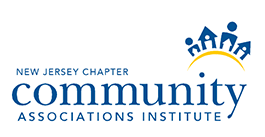CAI members know that 2011 saw the beginning of the federal government’s effort to rebuild our mortgage finance system in the wake of the worst housing and economic crisis since the Great Depression. As Congress and a host of federal agencies worked through this process, hundreds of pages of proposed regulations were drafted and issued for public comment and analysis. From new Federal Housing Administration (FHA) condominium lending guidelines, to pending regulations on Qualified Residential Mortgages (QRM), to Qualified Mortgages (QM) and to the Federal Housing Finance Administration’s transfer fee rule, tomorrow’s mortgage market began to take shape. As we move into 2012, this process will enter a critical final phase and may trigger another round of uncertainty and confusion in the housing markets.
First, in early 2012, CAI expects the federal government to release the final draft regulations on QRM and QM. QRM regulations deal with the structure of mortgages and QM deals with qualification criteria for future borrowers. As drafted, both present a set of challenges to the housing markets in general and to community associations in particular.
As reported by CAI, the pending QRM proposal would have a significant impact on potential buyers. New requirements would mandate minimum down payments of 20 percent prevent financing of closing costs and realtor fees and would disqualify buyers with just one late payment on any installment account. It is estimated that 70 percent of currently qualified borrowers would not meet this standard. While it is expected that the QRM draft will be significantly revised, the ongoing uncertainty hangs like a dark cloud on the horizon.
Revised draft QM regulations will also be released in 2012. These regulations focus on a borrower’s ability to repay a mortgage and contain provisions that include community association related expenses. On the positive side, QM will require that a lender qualify a borrower not just on the mortgage amount, but also on other mandatory fees like association assessments. This should help reduce assessment delinquencies. On the downside, QM requirements may also take action on association transfer fees and require the inclusion of special assessments in the qualification calculation on the basis that the assessment will be in place for the life of the loan.
Finally, in response to CAI members’ ongoing pressure, FHA will be making additional changes to its condominium insurance guidelines. FHA has indicated that they will be issuing additional guidance to address issues with project certifications, transfer fees and management company fidelity bonding. This is good news for CAI members as FHA accounts for up to one-third of all condominium loans. On the downside, due to a pull back in bank lending and the insolvency of Fannie Mae and Freddie Mac, FHA has been forced to fill the vacuum in the mortgage market. This has stressed the agency and pushed its financial reserves to dangerously low levels. If the economy stumbles and FHA’s reserves tip into the red, the agency could need a congressional bailout. With the heated political climate super-charged by election year politics, any solvency issues with FHA would likely set of a firestorm that could sideline the critical lending role FHA is now playing.
There is one point we can be sure of among all this uncertainty and that is that CAI will be working to make sure that CAI members voices are heard in this debate.
As part of our ongoing Mortgage Matters Program, CAI is working to protect homeowners in community associations and to ensure access to fair and affordable mortgage products for all current and potential community association residents. You can follow our work and share your thoughts at http://www.caimortgagematters.org/.

